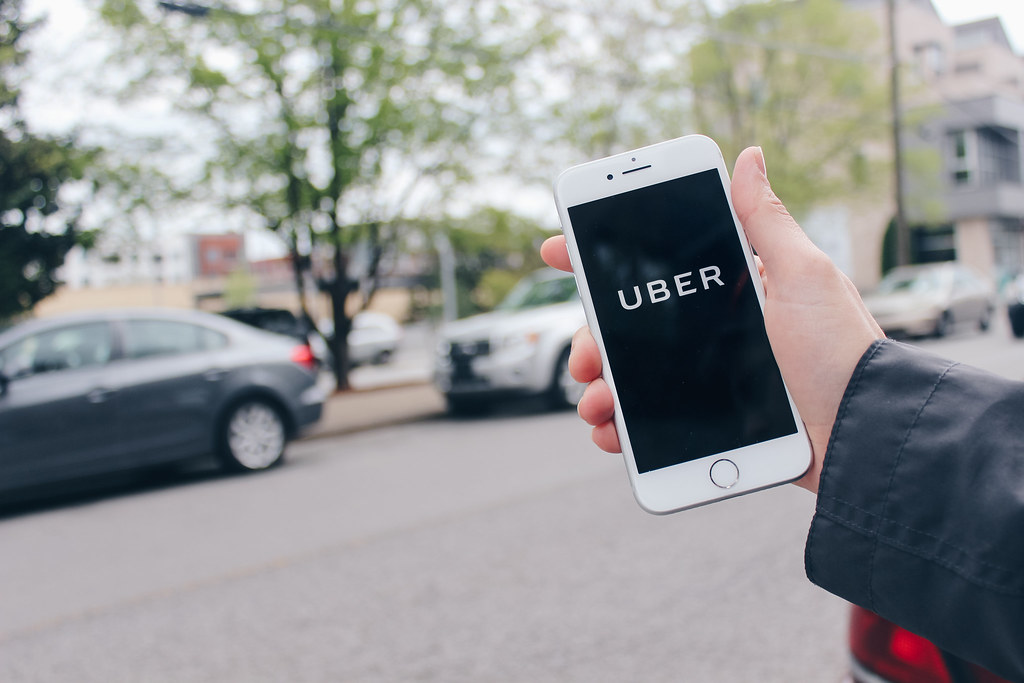


Introduction
In the digital age, the sharing economy has become increasingly prevalent. Therefore, it is important to understand the sharing economy and how it operates.
Currently, the sharing economy is usually facilitated by digital platforms that connect individuals with resources and those who have a need for them, resulting in the sharing of resources (John, 2017).
The rise of the digital age has significantly boosted the popularity of sharing economy platforms. These platforms have attracted a vast number of users due to their selling points of convenience, sustainability, and affordability (Ismail, 2015). There’s no denying that the convenience and accessibility of these platforms have transformed the way we travel, making it more convenient for users.
The Convenience of the Sharing Economy
The emergence of the sharing economy has caused significant changes in various industries. For instance, in transportation, ride-sharing companies like Uber and DiDi have revolutionized the conventional taxi industry by offering a more affordable and accessible means of transportation for users.In the travel and lodging industry, Airbnb offers personalized and affordable lodging options to users, significantly impacting the traditional hotel industry.



For consumers, the sharing economy offers cheaper alternatives to traditional goods, and platforms provide accessibility to consumers who don’t need ownership but can access them on demand (Puschmann & Alt, 2016). In addition, individual households are able to benefit from sharing economy platforms to earn additional income. Take Uber as an example, a car owner can register as a driver to pick up passengers and make an income. Similarly, in Airbnb, homeowners can rent out their unused homes to travelers and earn money. The sharing economy has opened up new possibilities for people to earn money by utilizing their assets and skills (John, 2017).
Exploitation in the Sharing Economy
The impact of sharing economy platforms may seem to benefit users in general, but this is also a business model phenomenon that exploits workers. In the sharing economy model, exploitation occurs when the shared resource holder receives an unfair share of the value in the transaction (Thomas et al., 2016). In the case of Uber, workers may appear to earn fees in the platform, but the platform actually potentially commoditizes the workers.
Uber categorizes drivers registered through their platform as independent contractors and not their employees, which leads to the following exploitative situation:
- No base salary and lack of benefits – Drivers who use Uber to pick up passengers receive a commission, but this means that their income is unstable and lacks basic security. Additionally, Uber categorizes them as independent contractors, which means that they are not entitled to traditional benefits like insurance, healthcare, and retirement. This can leave them without the necessary protections for their livelihood (Thomas et al., 2016).
- Misalignment of information– Platforms take advantage of the fact that users and drivers don’t have the same information, which can lead to unequal profit distribution (John, 2016). For example, during peak times, users may pay higher fares, but drivers don’t know how much passengers are paying. Uber can benefit from strategic misreporting and earn more, but drivers may only receive their regular commission, which puts them at a disadvantage.
- Additional economic losses – It is the responsibility of Uber drivers to cover the expenses related to their vehicles, including regular and accidental wear and tear (Admin, 2022). This means that drivers have to pay for the repairs and maintenance of their vehicles in order to keep working. Unfortunately, Uber does not provide any benefits or incentives to help drivers with these costs.
- Self-exploitation -Drivers may accept low wages and long hours to earn income, leading to self-exploitation (Rao, 2019).
The reason why exploitation exists in the sharing economy is because platforms play a major role in it. They are able to have strong control over the terms of the transactions generated in the platform (Thomas et al., 2016). They would have taken a disproportionate percentage of the commission on each transaction and the driver would only get a smaller income. Thus, in the sharing economy, it is neither the owners of the resources nor the demanders who benefit the most, but the creators of the platforms.
While the Gig Economy platform offers job opportunities, its unfair policies and exploitative practices can lead to resentment among workers. They receive low pay for the time and effort they put in, while the platform takes most of the earnings.
One user, Ja’han Jones, interviewed a Lyft driver who complained about the Lyft platform’s exploitation of employees, including the company’s refusal to pay workers’ unemployment benefits during the COVID-19 pandemic. In this industry, they don’t want to be referred to as gig workers because they tend to work full-time jobs, not part-time.
OneHandClap, a YouTube user, uploaded videos exposing how workers on certain platforms are exploited. These workers receive low wages and have to follow strict driving rules or risk having their accounts blocked. Furthermore, they aren’t given basic social security and benefits. The video also states that in 2017, a Brazilian court ordered Uber to pay a driver $10,000 for overtime, night shifts, and gas expenses.
Government regulation
As the sharing economy grows, governments and regulators will implement varying policies for different industries and countries. Some view the sharing economy as a promising source of economic growth, while others remain doubtful about improving it (John, 2016). The government will also help the growth of the industry by providing some tax incentives for sharing platforms and not enacting measures such as regulations that could stifle innovation in the industry (Submitter et al., 2022).
Some regulators will also call for tighter regulation of platforms to ensure that workers receive equal treatment as well as basic livelihood security. Some cities require ride-sharing platforms to provide basic liability insurance while others have implemented minimum wage laws for drivers (Thomas et al., 2016). As a result, governments must constantly strike a balance between competing interests and defend the rights of workers and consumers in an ever-changing regulatory environment pertaining to the sharing economy. In addition, governments across various areas will implement diverse regulatory policies contingent on the local circumstances, with the aim of achieving a balance between safeguarding the public interest and industry interests.
How to get the balance
Balancing the interests of both sharing economy platforms and workers is a complex matter, but there are implementable solutions. To ensure transparency, both parties should make their income public (Submitter et al., 2022). Governments and platforms should also provide basic health and accident insurance, as well as retirement policies for full-time sharing workforce employees. Achieving balance in the sharing economy requires ongoing efforts from stakeholders, including regulators and platforms.
Conclusion
In the digital age, the sharing economy has become a force for the masses to access and utilize resources. Its emergence has transformed various industries by providing convenience to users and more work opportunities for others. However, the gig workers who work through the sharing economy platforms are exploited by the platforms, and they don’t have a basic salary as well as universal social security. Governments and regulators, on the other hand, need to safeguard workers’ rights and formulate policies. It is necessary to balance the interests of sharing economy platforms and workers while safeguarding workers’ rights and pursuing a sharing economy that benefits everyone.
References
Admin. (2022, October 30). 5 signs you are being exploited by Uber / Lyft. BB Law Group. https://bblawgroupllp.com/5-signs-exploited-uber-lyft/
Ismail, A. (2015, January 18). How the sharing economy will impact marketing. TechCrunch. https://techcrunch.com/2015/01/17/how-the-sharing-economy-will-impact-marketing/
John, N. A. (2016). Sharing Economies. In The age of sharing (p. lviii–lxxvii). essay, Polity.
Puschmann, T., & Alt, R. (2016). Sharing economy. Business & Information Systems Engineering, 58(1), 93–99. https://doi.org/10.1007/s12599-015-0420-2
Puschmann, T., & Alt, R. (2016). Sharing economy. Business & Information Systems Engineering, 58(1), 93–99. https://doi.org/10.1007/s12599-015-0420-2
Rao, A. (2019, May 8). Uber was designed to exploit drivers. VICE. https://www.vice.com/en/article/3k3kdn/uber-was-designed-to-exploit-drivers
Submitter, I., Anand, A., Dutta, S., & Mukherjee, P. (2022). Platform exploitation in the sharing economy. SSRN Electronic Journal. https://doi.org/10.2139/ssrn.4287321
Thomas, K., Amira, R., Ben-Yoash, A., Folger, O., Hardon, A., Berger, A., Bursztein, E., & Bailey, M. (2016). The abuse sharing economy: Understanding the limits of threat exchanges. Research in Attacks, Intrusions, and Defenses, 143–164. https://doi.org/10.1007/978-3-319-45719-2_7

